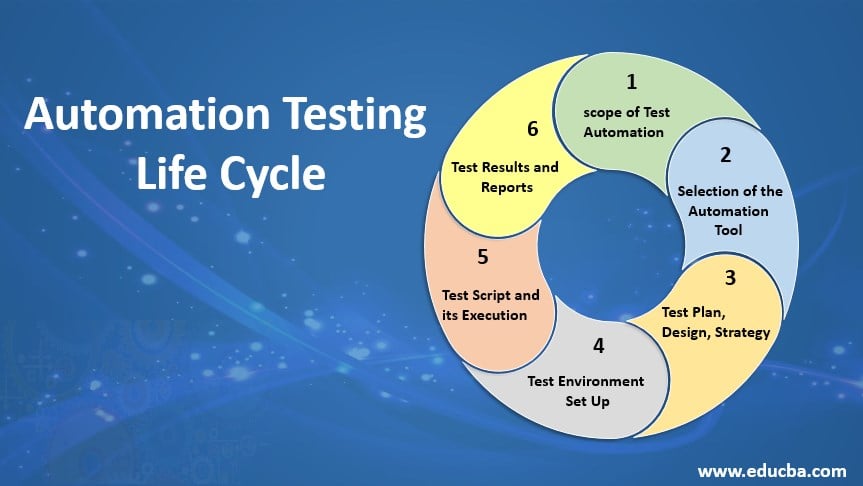Selecting the Right Tools for Effective Automation Testing Solutions
Selecting the Right Tools for Effective Automation Testing Solutions
Blog Article
From Manual to Automated Testing: A Comprehensive Guide to Transitioning Smoothly and Effectively
In the realm of software screening, the shift from manual to automated procedures has come to be a significantly crucial transition for companies seeking to boost effectiveness and accuracy in their screening methods. The trip from handbook to automated testing is not without its obstacles, however when approached purposefully and with a clear strategy in mind, the benefits can be considerable.
Benefits of Automated Checking
Automated screening offers various benefits, boosting efficiency and accuracy in software application development processes. Automated tests can be run all at once on multiple devices and operating systems, substantially speeding up the testing phase compared to hands-on testing.
In addition, automated testing guarantees a greater degree of precision in discovering flaws. Given that automated tests follow predefined scripts, human error is reduced, resulting in even more trusted examination outcomes. Uniformity in screening is additionally boosted, as automated examinations execute the same actions specifically each time they are run. This uniformity is critical in ensuring that all functionalities of the software are thoroughly tested, minimizing the likelihood of undetected bugs sliding through to manufacturing.
Selecting the Right Devices

Firstly, assess your objectives and requirements. Recognize the range of your job, the innovations entailed, and the capability of your group. This evaluation will certainly help you establish the features and abilities you call for in your testing devices.
Secondly, consider the compatibility of the devices with your existing processes and systems. Smooth assimilation with your current software program development lifecycle is vital to ensure a smooth transition to automation.
Furthermore, review the scalability and adaptability of the devices. As your screening needs progress, the devices must have the ability to adapt and fit modifications efficiently.
Lastly, factor in the support and neighborhood around the devices. Durable assistance and an energetic user neighborhood can supply valuable sources and help when applying automated testing. By very carefully considering these facets, you can select the right devices that line up with your requirements and set the stage for an effective change to automated testing.
Creating Reliable Test Manuscripts

When crafting examination manuscripts, it is vital to consider the specific needs of the software application article source being evaluated and ensure that the manuscripts address all crucial functionalities. Clear and detailed calling conventions for examination manuscripts and examination instances can enhance readability and maintainability. Furthermore, integrating mistake handling mechanisms within the test manuscripts can aid in recognizing and dealing with problems without delay.
In addition, arranging test scripts into modular elements can boost reusability and scalability, minimizing redundancy and improving performance in examination script maintenance. Normal evaluations and updates to evaluate scripts are crucial to keep speed with advancing software program requirements and functionalities. By complying with these concepts, testers can produce efficient and robust test manuscripts that add substantially to the success of automated screening processes.
Integrating Automation Into Workflows
Effective combination of automation tools right into existing operations improves processes why not find out more and improves productivity within software application development cycles. When incorporating automation right into process, it is essential to recognize recurring tasks that can be automated to conserve time and lower human error. By flawlessly incorporating automated screening devices like Selenium or Appium right into the software growth lifecycle, groups can attain faster responses on code adjustments, causing quicker bug discovery and resolution. This assimilation allows for continual screening throughout the development procedure, making sure that any type of concerns are identified beforehand, causing greater software program high quality. Additionally, automation can be utilized to trigger examinations instantly after each code commit, providing instant recognition and maximizing testers to concentrate on more complex situations. Correct assimilation of automation tools calls for partnership between development, testing, and operations groups to develop a unified process that enhances efficiency and effectiveness in delivering top quality software program products.
Ensuring a Smooth Transition
Efficiently transitioning to automated testing includes careful preparation and cautious implementation to make the most of and minimize disruptions effectiveness in the software application development procedure - automation testing. To make certain a smooth transition, it is important to begin by performing an extensive evaluation of the present testing processes and determining locations where automation can bring the most considerable benefits. Engaging with all stakeholders at an early stage at the same time, including programmers, testers, and project managers, is vital for gathering support and buy-in for the automation campaign
Interaction is essential throughout this transition stage. Clear communication of the objectives, benefits, and expectations of automated testing assists to manage any type of resistance or worries that may arise. In addition, giving sufficient training and sources for staff member to upskill in automation devices and techniques is vital for making sure an effective shift.

Conclusion
To conclude, transitioning from guidebook to automated testing uses numerous advantages, including enhanced page efficiency and integrity. By picking the appropriate tools, composing effective examination manuscripts, and incorporating automation perfectly right into workflows, companies can make sure a smooth and effective change. It is essential to embrace automation as a useful asset in software program testing procedures to boost total top quality and productivity.
In the realm of software program testing, the change from guidebook to automated processes has actually become an increasingly vital shift for companies looking for to improve performance and precision in their screening methods. Automated tests can be run simultaneously on multiple devices and operating systems, drastically speeding up the screening phase compared to hand-operated testing. Consistency in testing is additionally boosted, as automated tests carry out the same actions specifically each time they are run.To make certain the successful application of selected testing tools, the creation of reliable test scripts plays a crucial function in confirming the functionality and performance of automated procedures - automation testing. By adhering to these principles, testers can develop efficient and durable test manuscripts that contribute dramatically to the success of automated testing processes
Report this page